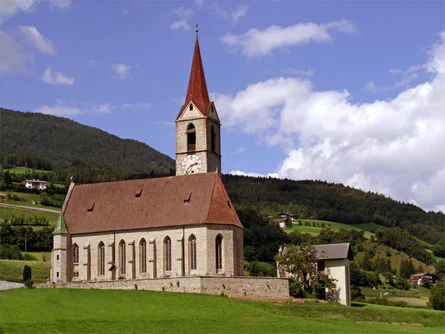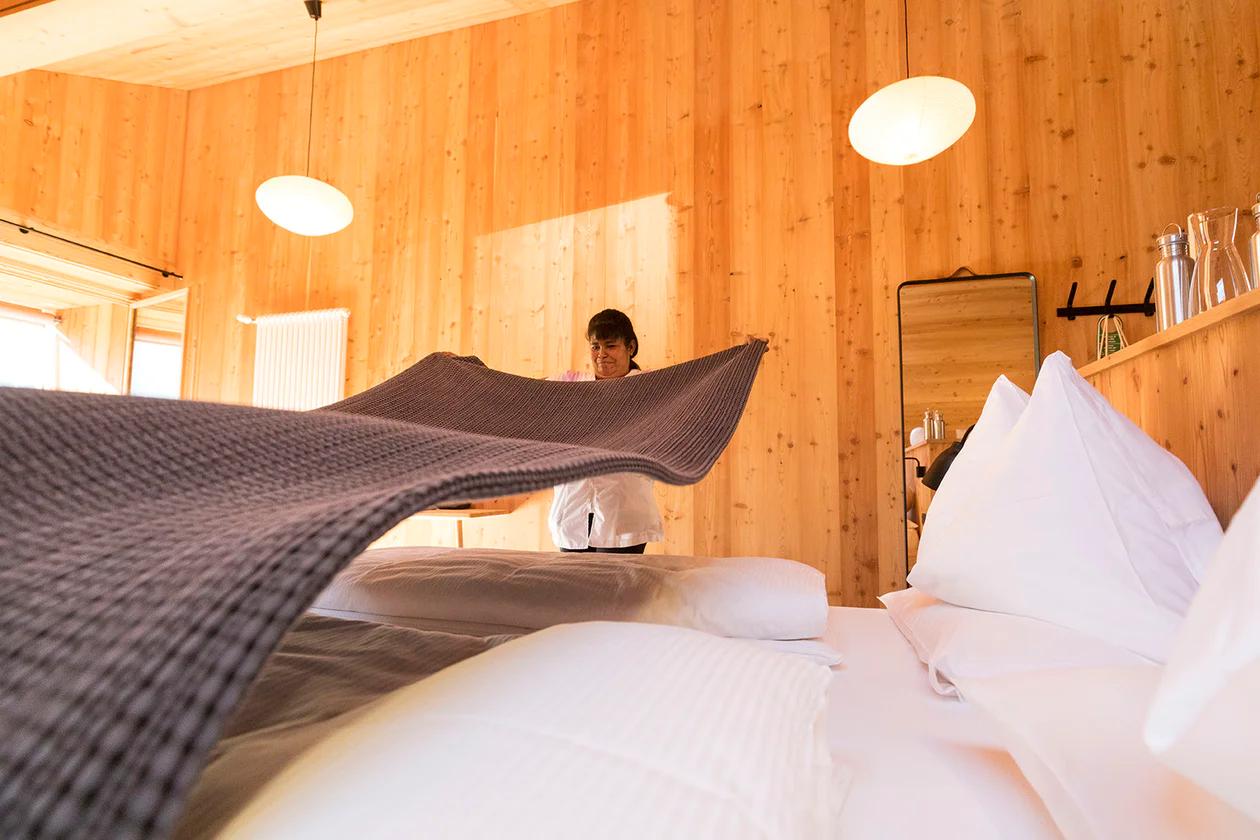The Säben Mountain and its monastery deserve great attention for their archaeology, history, and art.
The artist Sonja Hofer from Klausen describes the fortress above Klausen as follows: "Sublime and striking, yet also slightly cold, the pale, pseudoromantic architecture of the monastery, marked by rigid symmetry, stands out starkly against the sky."
There is much to tell about the historically significant fortress above Klausen: Around the year 1000, the bishop’s seat was moved from Säben to Brixen. Until then, the Holy Cross Church served as the "Cathedral of the Diocese of Sabiona" for nearly 400 years.
The "Holy Mountain" is one of the oldest pilgrimage sites in Tyrol, with the well-known Ladin Cloister first mentioned in 1503. For over 335 years, Benedictine nuns shaped the Holy Mountain before leaving the monastery in November 2021. Since September 7, 2024, a new era has begun under Father Kosmas Thielmann OCist: the Cistercians from Heiligenkreuz Abbey have breathed new life into the monastery. Their goal is to reestablish Säben as a spiritual center and significant pilgrimage destination in South Tyrol.
Daily Mass is celebrated at 11:30 a.m. in the monastery church.
With support from the Diocese of Bolzano-Bressanone and the local community, the monastery aims to provide a space for prayer and meditation, as well as a place for encounter and exchange. More Cistercian monks are expected to join, strengthening the monastic community and revitalizing Säben's centuries-old tradition.


























































